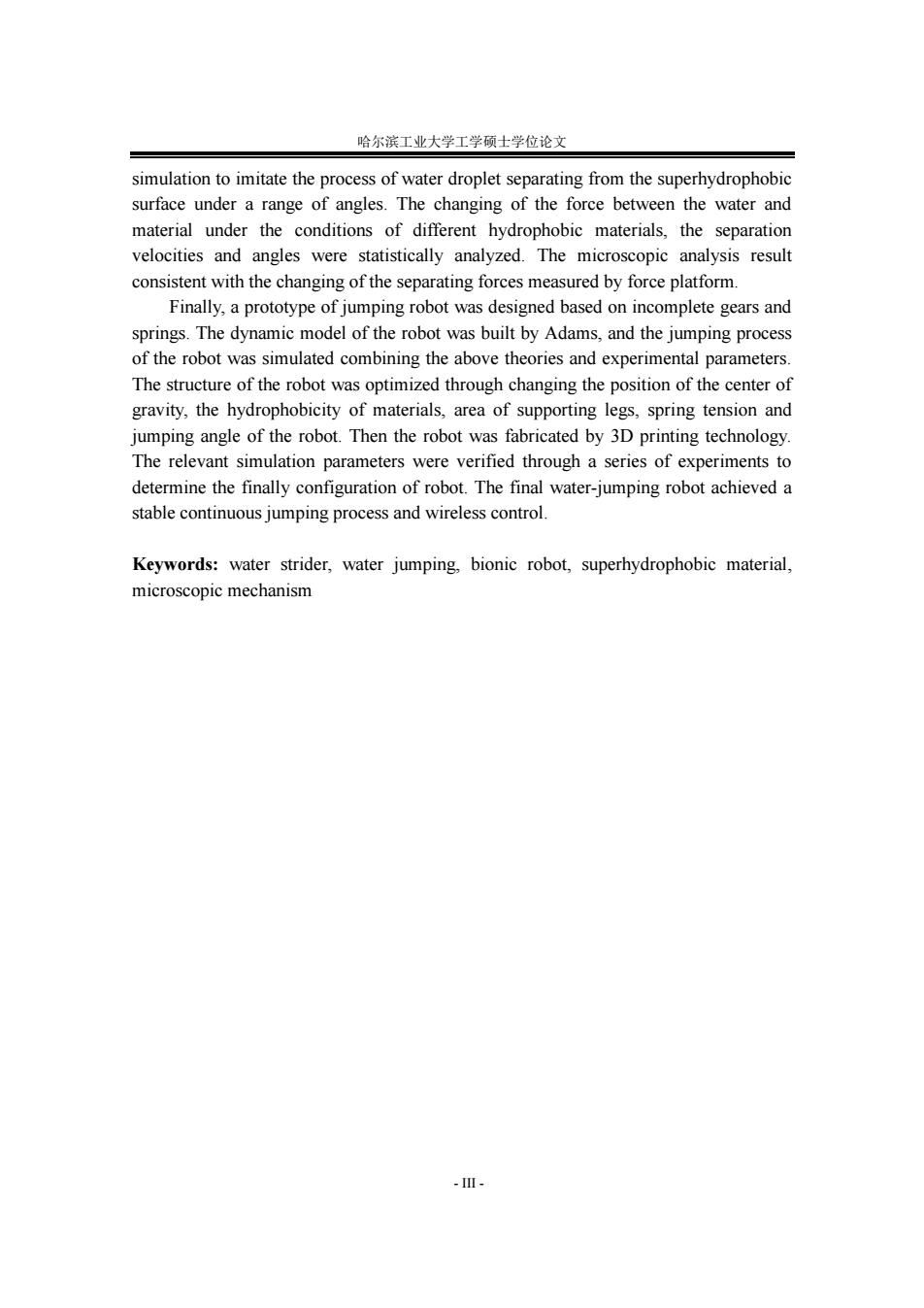正在加载图片...

哈尔滨工业大学工学硕士学位论文 simulation to imitate the process of water droplet separating from the superhydrophobic surface under a range of angles.The changing of the force between the water and material under the conditions of different hydrophobic materials,the separation velocities and angles were statistically analyzed.The microscopic analysis result consistent with the changing of the separating forces measured by force platform Finally,a prototype of jumping robot was designed based on incomplete gears and springs.The dynamic model of the robot was built by Adams,and the jumping process of the robot was simulated combining the above theories and experimental parameters. The structure of the robot was optimized through changing the position of the center of gravity,the hydrophobicity of materials,area of supporting legs,spring tension and jumping angle of the robot.Then the robot was fabricated by 3D printing technology. The relevant simulation parameters were verified through a series of experiments to determine the finally configuration of robot.The final water-jumping robot achieved a stable continuous jumping process and wireless control. Keywords:water strider,water jumping,bionic robot,superhydrophobic material, microscopic mechanism -I-哈尔滨工业大学工学硕士学位论文 - III - simulation to imitate the process of water droplet separating from the superhydrophobic surface under a range of angles. The changing of the force between the water and material under the conditions of different hydrophobic materials, the separation velocities and angles were statistically analyzed. The microscopic analysis result consistent with the changing of the separating forces measured by force platform. Finally, a prototype of jumping robot was designed based on incomplete gears and springs. The dynamic model of the robot was built by Adams, and the jumping process of the robot was simulated combining the above theories and experimental parameters. The structure of the robot was optimized through changing the position of the center of gravity, the hydrophobicity of materials, area of supporting legs, spring tension and jumping angle of the robot. Then the robot was fabricated by 3D printing technology. The relevant simulation parameters were verified through a series of experiments to determine the finally configuration of robot. The final water-jumping robot achieved a stable continuous jumping process and wireless control. Keywords: water strider, water jumping, bionic robot, superhydrophobic material, microscopic mechanism